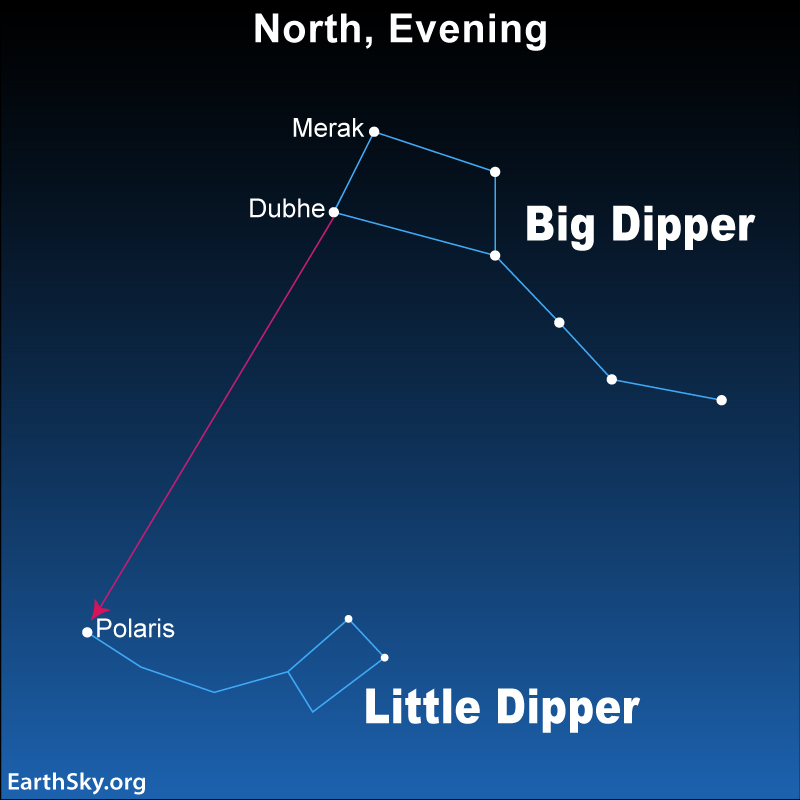Earthsky
2d
270

Image Credit: Earthsky
The Big and Little Dipper: How to find them in the spring
- The Big and Little Dipper are easily visible in the northern sky in the spring for the Northern Hemisphere. The 2 outer stars in the Big Dipper point to Polaris, the North Star, which marks the end of the handle of the Little Dipper.
- Both the Big and Little Dippers are circumpolar, being above the horizon throughout the night in certain latitudes.
- The Big Dipper rotates around Polaris and changes in its position in the sky based on the season.
- To find the Little Dipper, trace a line from the outer stars of the Big Dipper to Polaris, then to the handle of the Little Dipper.
- The Big and Little Dippers are not constellations but asterisms, forming recognizable star patterns within the Ursa Major and Ursa Minor constellations.
- Over millennia, the star patterns of the Big and Little Dippers will slowly evolve due to the movement of stars in space.
- In Mi'kmaq star lore, the Celestial Bear associated with the Big Dipper has a captivating story involving hunters and the changing seasons.
- The Little Dipper, historically part of the Draco constellation, has played a role in navigation and is tied to ancient seafaring knowledge.
- Kochab and Pherkad, stars in the Little Dipper, are found to be the Guardians of the Pole marking the north celestial pole.
- Overall, the Big Dipper and Little Dipper are iconic star formations that captivate skywatchers throughout the year, with unique stories and celestial significance.
Read Full Article
16 Likes
For uninterrupted reading, download the app